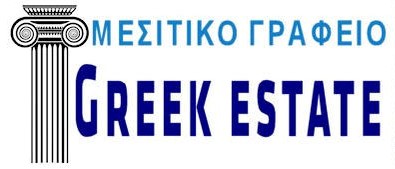
(+30) 27410-76506

Corinth Canal
History
Principal engineer: István Türr and Béla Gerster
Construction began: 1881
Date of first use: July 25, 1893
The Corinth Canal (greek. Dhioryga tis Korinthou) is a canal that connects the Gulf of Corinth with the Saronic Gulf in the Aegean Sea. It cuts through the narrow Isthmus of Corinth and separates the Peloponnese from the Greek mainland, thus effectively making the former peninsula an island. The builders dug the canal through the Isthmus at sea level; no locks are employed. It is 6.4 kilometres (4 mi) in length and only 21.4 metres (70 ft) wide at its base, making it impassable for most modern ships. It now has little economic importance.
The canal was mooted in classical times and an abortive effort was made to build it in the 1st century AD. Construction finally got under way in 1881 but was hampered by geological and financial problems that bankrupted the original builders. It was completed in 1893 but, due to the canal's narrowness, navigational problems and periodic closures to repair landslides from its steep walls, it failed to attract the level of traffic expected by its operators. It is now used mainly for tourist traffic.
Ancient attempts
Several rulers in antiquity dreamed of digging a cutting through the Isthmus. The first to propose such an undertaking was the tyrant Periander in the 7th century BC. The project was abandoned and Periander instead constructed a simpler and less costly overland portage road, named the Diolkos or stone carriageway, along which ships could be towed from one side of the isthmus to the other. Periander's change of heart is attributed variously to the great expense of the project, a lack of labour or a fear that a canal would have robbed Corinth of its dominant role as an entrepôt for goods. Remnants of the Diolkos still exist next to the modern canal.
The Diadoch Demetrius Poliorcetes (336-283 BC) planned to construct a canal as a means to improve his communication lines, but dropped the plan after his surveyors, miscalculating the levels of the adjacent seas, feared heavy floods.
The philosopher Apollonius of Tyana prophesied that ill would befall anyone who proposed to dig a Corinthian canal. Three Roman rulers considered the idea but all suffered violent deaths; the historian Suetonius tells us that the Roman dictator Julius Caesar considered digging a canal through the isthmus but was assassinated before he could commence the project. Caligula, his successor as the third Roman Emperor, commissioned a study in AD 40 from Egyptian experts who claimed incorrectly that the Corinthian Gulf was higher than the Saronic Gulf. As a result, they concluded, if a canal was dug the island of Aegina would be inundated. Caligula's interest in the idea got no further as he too was assassinated.
The emperor Nero was the first to actually attempt to construct the canal, personally breaking the ground with a pickaxe and removing the first basket-load of soil in AD 67, but the project was abandoned when he died shortly afterwards. The Roman workforce, consisting of 6,000 Jewish prisoners of war, started digging 40-50 m (130-160 ft) wide trenches from both sides, while a third group at the ridge drilled deep shafts for probing the quality of the rock (which were reused in 1881 for the same purpose). According to Suetonius, the canal was dug to a distance of four stades (approximately 700 metres (2,300 ft), in other words about a tenth of the total distance across the isthmus). A memorial of the attempt in the form of a relief of Hercules was left by Nero's workers and can still be seen in the canal cutting today. Other than this, as the modern canal follows the same course as Nero's, no remains have survived.
The philosopher and Roman senator Herodes Atticus is also known to have considered digging a canal in the 2nd century AD, but did not manage to get a project under way. The Venetians also considered it in 1687 after their conquest of the Peloponnese but likewise did not initiate a project.
Construction of the modern canal
The idea of a Corinth Canal was revived after Greece gained formal independence from the Ottoman Empire in 1830. The Greek statesman Ioannis Kapodistrias asked a French engineer to assess the feasibility of the project but had to abandon it when its cost was assessed at some 40 million gold francs-far too expensive for the newly independent country. Fresh impetus was given by the opening of the Suez Canal in 1869 and the following year, the government of Prime Minister Thrasyvoulos Zaimis passed a law authorising the construction of a Corinth Canal. French entrepreneurs were put in charge but, following the bankruptcy of the French company that dug the Panama Canal, French banks refused to lend money and the company went bankrupt too.